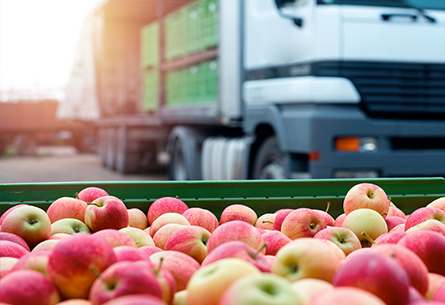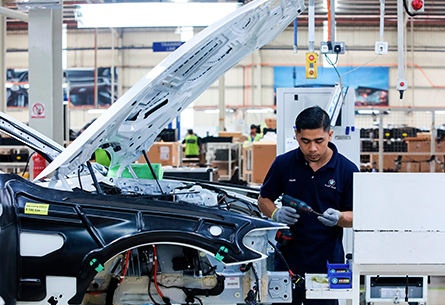Although the whole process has culminated, with customs ready to embrace the change, there still remain some further tasks to fulfill. These relate to various reforms, such as food safety issues for products such as meat, which will enable us to harness the full potential of this FTA.
Colombian products with 0% tariff
- 99% of Colombian qualifying industrial and textile goods will become duty free upon the implementation of the FTA.
- 89% of Colombian agricultural goods will become duty free upon implementation of the FTA.
- Duties on many other tariff lines will be phased out over a period of up to 15 years, with some agricultural tariff rate quotas. While Colombia is expected to fill its new sugar TRQ, the FTA is likely to have a minor effect on U.S. imports and production of sugar and sugar containing products.

Key facts
The Colombia- U.S. FTA promotes trade in goods by eliminating tariff barriers, and by promoting the harmonization of technical regulations between both parties. As a result, FTA supports economic growth in both countries.
The FTA supports American jobs and improves American competitiveness since many American businesses use imports under this program as inputs to manufacture goods in the United States.
It is expected that the agreement will be effective in the second half of 2012, once Colombia accomplish all the agreement laws, regulations and policies. USTR is helping to accomplish these requirements as quickly as possible.
Colombia’s government is ensuring labor laws by promoting more protection rights for workers, to please and accomplish the strategic goals of the bilateral Labor Action Plan.
The USTR General Counsel, Tim Reif said that the FTA with Colombia is “well on the road” and is likely to be the next FTA to see implementation -GBD event on the pending FTAs.
United States Trade Representative Ron Kirk said “USTR has already started the work necessary to bring these agreements into force as soon as possible”- September 2011.
Colombia asked assistance in its labor to upgrade its workers rights from both the International Labor Organization and U.S. government. Mr. Kirk said:“It feels like they are absolutely meeting both the letter and spirit of what we asked them to do”.
Colombian products with 0% tariff
ATPDEA
The approval of the FTA extends the Andean Trade Promotion and Drug Eradication Act, ATPDEA, which was renewed until July 2013. The tariff preferences that many Colombian products have had shall be maintained with the FTA and therefore, sectors such as flowers, apparel, tobacco, cocoa, plastics and leather manufacturing, among others, shall be benefited.
In fact, both the ATPDEA preferences as well as the others that were agreed upon, shall be maintained over time, given that their persistence shall not be subject to unilateral U.S. Government and Congress decisions.
Agreements texts
The FTA is an agreement that generates opportunities for all Colombians, as it contributes to the creation of quality jobs and the improvement of the national economy’s performance. It benefits the exports sector, which will be able to sell its products and services under favorable conditions in the U.S. market.
The subjects that were negotiated were market access, in its two aspects (industrial and agricultural), intellectual property, investment regime, Government acquisitions, conflict resolution, competency, e-trade, services, environment and labor, among others.
The text of the agreement is embodied in one preamble and 23 chapters. The chapters cover aspects that reflect the general agreed-upon disciplines, many of which are common in multilateral and bilateral negotiations, and incorporate particular elements obtained by Colombia as well as by the United States in the negotiation.
For more details on the agreement, visit the Ministry of Trade, Industry and Tourism website at: http://www.tlc.gov.co/
FAQs about TLC
If it refers to the concerns of businesses in the sectors of rice and chicken, we have reiterated that the periods of relief range from 10 to 19 years, which is a reasonable time to increase competitiveness.
Yes, the Government, through the Ministry of Agriculture, has announced $1 billion to support the technological transformation of sectors such as dairy, beef, rice, and poultry, which are those most threatened by the competition that may come.
Studies show that an FTA between Colombia and the U.S. will give opportunity for growth and export in sectors such as fisheries, oil and gas,his also includes professional services. We should not forget that the U.S. is the country that buys the most goods. Likewise, the experience of other countries in Latin America shows that sectors which did not register trade prior to an agreement can be unexpected winners once the agreement enters into force.
It depends on the productive structure of each region of Colombia, but this may include, for example, lines of textiles for the home that were not covered by the ATPDEA. This includes such things as drapery, towels, linens, as well as footwear and leather goods, and metalworking (products such as window frames and tools). There are also possibilities in cosmetics, furniture, agro products, chemicals and plastics, as well as in services.
That depends largely on how quickly businesses move. Our efforts at the Ministry of Trade, Industry, and Tourism and at Proexport have been to encourage business to act quickly.
On the contrary, the agricultural sector is among the big winners with the FTA, since there are mechanisms to ensure effective access, as well as instruments to protect sensitive products. In fact, there is big opportunity for fruits, vegetables, dairy, meat, and tobacco. And this also includes great opportunities for flowers, sugar and its derivatives, ethanol, palm oil and its derivatives, prepared foods, pastries and biscuits, cocoa and chocolate, brown sugar, herbs, coffee, and cotton.
This is a product without charges, so its imported inputs enter, preferentially.
For sensitive products, protection mechanisms were established, such as automatic safeguards, higher base rates, extensive elimination of tariffs, tariff quotas and grace periods.
This sector will fair much better. Now, the tariff preferences are for an indefinite period, which both guarantees the arrival of new foreign investment to the sector, as well as the possibility of long-term contracts.







